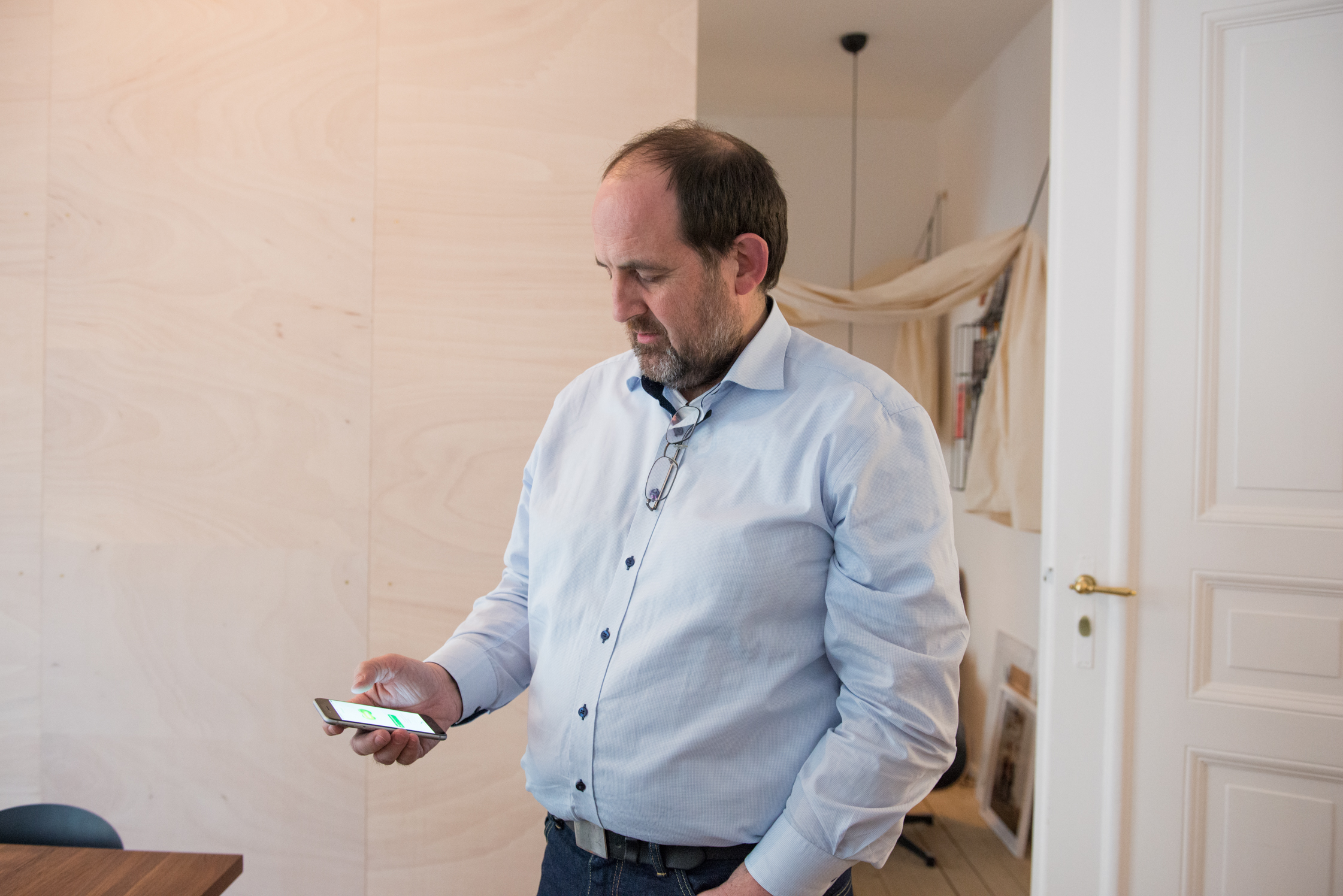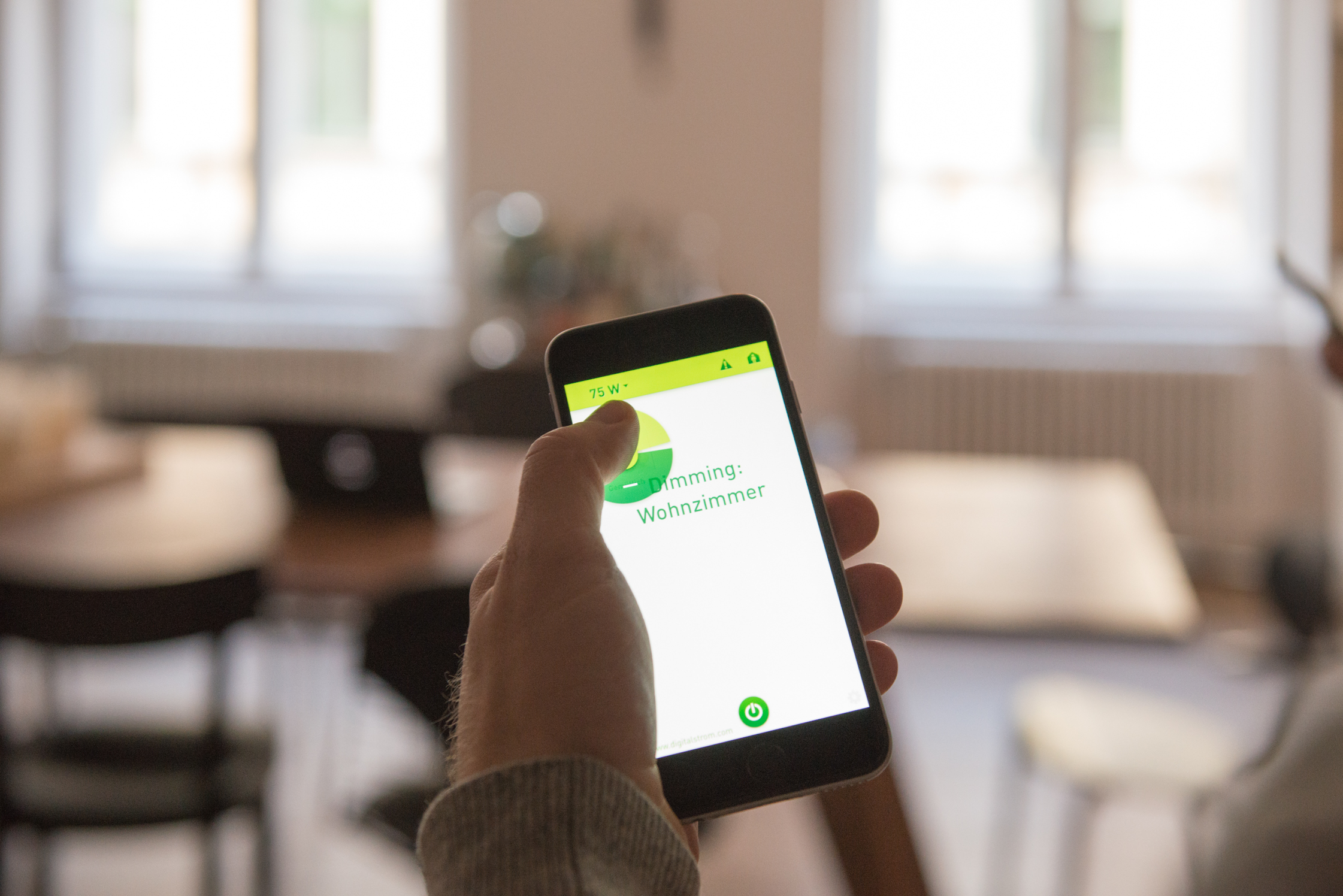“Smart House – The Cooper’s home has a mind of its own” is the title of a Disney film from 1999, in which a widowed father and his two children, move into a fully automated house named “Pat.” Pat cooks, cleans and talks to the children like a mother. It keeps an eye on how much sugar there is in the son’s milkshake and in the end locks all the doors in an attempt to protect the family from outside harm.
What was once just a science fiction story aimed at children is today a very real theme of economic, scientific and cultural discussions. At the center of this debate is Martin Vesper, the CEO of digitalSTROM and an expert in such topics as the Smart Home.
Even though technology is already well integrated in our daily lives, the services currently being explored by digitalSTROM still feel a little futuristic – like programmed lamps and heaters to automated shutters that let the sun in in the morning, or close tightly at the announcement of a hail storm. All these capabilities and more are already hidden inside the small, colorful terminals somewhat reminiscent of Lego blocks that Martin Vesper has carefully laid out on the table in front of him. “The intelligence is in the chip.” Martin goes on to describe the microcosm of terminal strips that, along with the rest, can be built into every lamp, light switch or roller door motor. With the assistance of an app, the user is able to give all these appliances commands. Say “go” into your smartphone and seconds later the lights go out. “There can’t be any single point of failure as the signal is sent individually to each lamp or device. They then decide what needs to be done,” says Martin.



The technology for this interconnectedness has been in development for some time. Why it is only now coming to the market as a tangible product, even though we already saw these possibilities on the Disney Channel back in 1999, is the topic of Richard Harpers book “Inside the Smart Home.” That author believes that the bridge between technology and the user has long been lacking. While programmers worked on technical details, it remained unclear if and how the smart home would find a real application with potential customers. Families aren’t businesses, explains Harper, their structure is much more complex, because they span in age from newborns to pensioners. Detailed analysis is also hard to obtain as very few people wish to be observed 24 hours a day.




The telecommunications company Orange made an earlier attempt at the smart house back in 2001, with their “Orange at Home” project. They built an interactive display home and tested it by having families live in it. The results were somewhat sobering. The test inhabitants found the technology way too confusing. “On the whole two main issues were realised,” says Martin, “The task of inventing something that is small enough to fit inside a light switch and still communicate via the electricity lines, is only half the challenge. Making the software as user-friendly as possible is just as important.”
The factors contributing to the growing trend towards an automated house are the same that have driven the automobile industry for years. Safety, efficiency and comfort are always yardsticks of development. The current issues being brought to the surface by the idea of a smart home have long been industry standards in the automobile world. “It is almost impossible for the brake lights of a car to react at the exact same time the driver presses the breaks without some form of technical software,” Martin remarks. “The fact that the lights go on when you turn the key is an added bonus.” Safety comes first. Efficiency and comfort follow. It is the same in the automated house. To be able to dim the lights according to your personal needs is both a pleasant and energy saving function. But the safety applications will be the most interesting. “In Germany 800 people a year die from smoke inhalation during apartment fires. Our software will be able to connect and communicate with smoke detectors. Parents in the future will be able to leave a recorded message that, in the event of a fire, would sound out instructions to anyone in the house, guiding them in what to do. Sadly in many cases, kids panic and make bad decisions like hiding under the bed at the shrill sound of such alarms. This technology also has many valuable uses for the elderly. They could be reminded by voice message to turn of the stove and if the system registers no or a lull in activity than family members could be notified.


A home is a trusted, private place and therefore we are very careful when letting in new technologies. Particularly when they control our daily movements and somehow seem to “know better” than we do. “When we feel we are losing control, then we get scared. That’s totally normal,” says Martin. “But at the same time we would like to be understood better and have more personalised interaction, preselected and catered to our individual needs. Previously there was the ‘corner store’ where the owner knew what you wanted. Now it’s algorithms that predict our desires. They help us maintain an overview in today’s flood of information and product diversity. Algorithms are one way to reduce the complexity. In the end, at home I want to be able to be able to choose from my own individualised set ofpossibilities and not just those that everybody else has. That’s the trade off.”



Martin believes that in about 20 years the smart house could replace the traditional home. But it remains to be seen who the global market key players will be. There are currently firms in the auto industry that could potentially become important names in the future of the smart home. With their latest smart car designs companies like Apple, Google or Tesla are currently making the competition look outdated. The best prototype of last year being from Google.
The whole world is looking at the first self driving cars with great interest, somewhat in awe but also sceptically. How can it be that an internet company like Google is suddenly making cars? And better than a traditional manufacturer like Audi? Google has secured a monopoly by collating the best algorithmic data. Martin firmly believes that’s why this company feels brave enough to tackle the automated car or artificial intelligence.“Apple is a key player, but only in the hardware world. The company excels in a unique user experiences, user-friendliness and amazing design. Because of this I believe Google will also play a big role in the automated logistics of the smart home. However, the infrastructure will be in other hands. The average car manufacturer is also not able to provide much of the infrastructure involved in building a car. This is taken care of by firms such as Bosch or Continental. It is the aim of DigitalSTROM to be the Continental, so to speak, of the smart home industry. We are the infrastructure, we bring the software and we will set the priorities, we will be the ones saying ‘The breaks are most important. Then come the warning lights.’”



Marin Vesper has discovered the potential of such technologies and come to appreciate them. This is why he is so excited about the future. “You couldn’t even begin to imagine how many new developments lie in all of this. First comes the idea, then the technology, but what will be done with that technology in the end, still remains to be seen. It is imperative that politicians keep an open mind and allow and support progress. That hasn’t been the case in Germany so far. We shy away from the responsibility for anything unknown. The fact that automated cars are already allowed to drive on the streets of America should be a wake up call for us. A car can’t drink-drive,” he says. “Change itself doesn’t overwhelm anyone anymore, it’s more the pace with which it progresses that has us scared.”
Maybe this is the perfect time for a remake of Disney’s “Smart House”
Martin, thank you for sitting down with us at the FvF Apartment to have this great conversation. Find more information about digitalSTROM‘s innovative systems on their website.
Photography: Carina Adam and Janosch Geiger
Text & Interview: Leonie Haenchen

